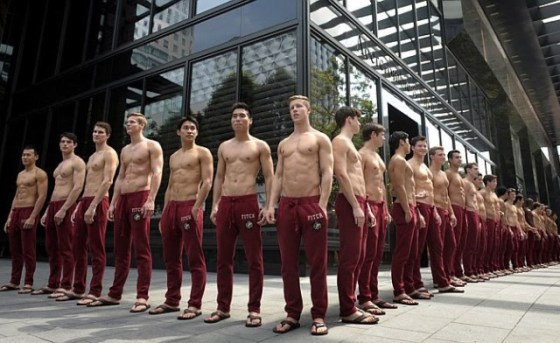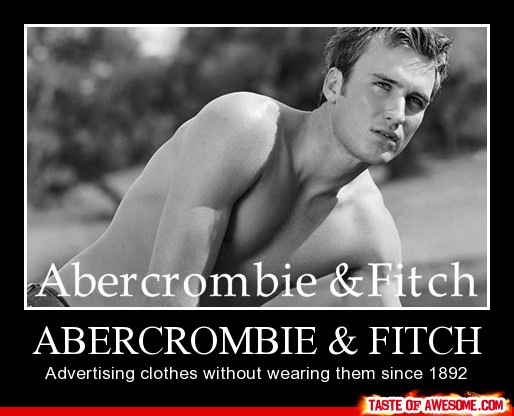Last week I briefly spoke about the importance of brand identity and the importance of brand awareness and recognition of the brand. I then went on to talk about a few techniques within branding that help to promote the product and get it recognised. This week I will focus on the importance of brand perception and how not only the brand is perceived but how this has an effect on the product itself. This links in to how companies are able to charge different amount for certain products based on peoples perceptions.
Brand perception
Brand perception is looking into how people see your brand. Do they see it as a high quality brand? Do they see it to be a cheap but good product? This is important when selling yourself as a brand. You cant always choose how you are perceived but it is important to try and influence consumers into how you would like to be seen. This again links in with week 1’s blog and your brand identity as these are the ways in which your brand is going to be noticed. Its not just important for it to be noticed however its how it gets noticed and the feelings that people get from these. Therefore this is why marketing is so important as this determines the feelings that people have when they first notice your product. If you are a clothing company and you want to seem upper market you don’t want to be selling them in a shop which is known for being cheap and cheerful. If you do people are going to perceive your products to be cheap and wont be willing to pay high prices for these.
An obvious thing to say is that consumers don’t like to pay a lot of money for products however its also important that they are not paying more than they believe the item to be worth. As a general rule people like to know they are getting a good deal and value for the product. However certain products are able to charge more than others based on brand identity but also brand perception. One interesting example is the american company Abercrombie & Fitch. This is perceived as the upper class of society to where, and the clothing is expensive due to this. Part of this is to do with there branding and marketing side of it. 
They like to be seen as being made for the upper of end of society and marketed to certain groups of people. A lot of their marketing is images of half naked men who are deemed to be ‘beautiful’ with perfect bodies. They reinforce this with the staff they employ stating they only hire people who are good looking.
Therefore they are targeting certain groups of people only. They don’t want every tom, dick and harry to be wearing their products. They are designed for a certain group and therefore people who buy them are perceived to be certain types of people. Although they have been in trouble for this for negative stereotyping with their owner stating he only wants thin and beautiful people to wear their products it does work in the marketing sense. The people who are offended by this wouldn’t be buying their products in the first place so they are not too bothered. They even dont make sizes bigger than large for women just to reinforce who is wearing their products.
It caused a lot of outrage within the media due to these comments however it is still one of the biggest clothing companies in America. I actually think although it is clearly wrong to state that only the thin and beautiful are able to wear the product it is still very clever way of advertising. He may have lost a few fans because of it but they wouldn’t be buying the clothing and he wants to reinforce certain aspects of the brands identity. He likes to be seen as upmarket, classy and not everyone will be able to afford to wear the clothing. One example of how it likes to be see in a certain way was in the news a few years ago. Someone on one of the reality tv shows in America who is seen to be sleepy was offered money by Abercrombie and Fitch not to wear their clothes any more. This is due to the fact he wasn’t the type of person their brand wanted to be associated with. This links in with last weeks blog and the example I talked about with Nike using Tiger Woods and Roger Federer. Although sometimes using famous people can improve a brands image sometimes it can have a detrimental effect on how people perceive the brand.
When purchasing a product from clothing brands you aren’t just paying for the item you are paying for the brand itself as well. You are paying to be part of a certain group and be involved with a certain identity. People don’t tend to want to be acknowledged as cheap and although it may be wrong certain brands can influence this association. If every brand was the same price then there wouldn’t be such a demand to be seen in certain clothes and products. People who buy Abercrombie & Fitch purchase their clothing obviously for the quality but mostly to be seen in this brand. If it suddenly started selling cheap to everyone their would be outrage with their existing customers. Even though people might not like how expensive certain brands are the reasons behind it are understandable. We might want them to be cheaper and the same as other clothing brands however would they be as unique if this was the case. This is why i have put “ok” in quote marks as it is necessary in order for companies to succeed even though sometimes we might not agree with it as consumers.

Good blog and I agree with the points you make, but ultimately The price is set by customers state of mind. An example of this would be a study from Robert Cialdinies “influence” which saw a jeweller who accidently priced an item at double its initial price, instead of half as this particular turquoise jewellery was not selling. The inflated price made the item irresistible to consumers, as the price increased so did the perceived value of the item. (Cialdini, 2009)
The video below is another example of how price can be a state of mind, and even in some cases a piece of clever marketing by the brand.
As you have mentioned, it is the more attractive models and celebrities that the brands use, which tap into our humanistic need to improve ourselves and be more like the people we see on tv. It is the desire to become the desire to become involved with the brand and all the connotations of trend that comes with the purchased item. You are not just buying into the item of clothing, as you used as an example but you are also buying into the brand.